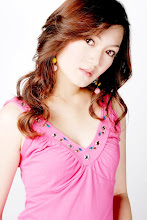The dance originated in lower-class districts of Buenos Aires. The music derived from the fusion of various forms of music from Europe.[1] Jorge Luis Borges in "El idioma de los argentinos" writes:"Tango belongs to the Rio de la Plata and it is the son of Uruguayan "milonga" and grandson of the "habanera". The word Tango seems to have first been used in connection with the dance in the 1890s. Initially it was just one of the many dances, but it soon became popular throughout society, as theatres and street barrel organs spread it from the suburbs to the working-class slums, which were packed with hundreds of thousands of European immigrants.
In the early years of the twentieth century, dancers and orchestras from Buenos Aires and Montevideo travelled to Europe, and the first European tango craze took place in Paris, soon followed by London, Berlin, and other capitals. Towards the end of 1913 it hit New York in the USA, and Finland. In the USA around 1911 the name "Tango" was often applied to dances in a 2/4 or 4/4 rhythm such as the one-step. The term was fashionable and did not indicate that tango steps would be used in the dance, although they might be. Tango music was sometimes played, but at a rather fast tempo. Instructors of the period would sometimes refer to this as a "North American Tango", versus the "Rio de la Plata Tango". By 1914 more authentic tango stylings were soon developed, along with some variations like Albert Newman's "Minuet" Tango.
In Argentina, the onset in 1929 of the Great Depression, and restrictions introduced after the overthrow of the Hipólito Yrigoyen government in 1930 caused Tango to decline. Its fortunes were reversed as tango again became widely fashionable and a matter of national pride under the government of Juan Perón.
Tango declined again in the 1950s with economic depression and as the military dictatorships banned public gatherings, followed by the popularity of Rock and Roll. The dance lived on in smaller venues until its revival in 1983 following the opening in Paris of the show Tango Argentino created by Claudio Segovia & Hector Orezzoli. This show made a revolution worldwide, and people everywhere started taking tango lessons.
In 1990, dancers Miguel Angel Zotto and Milena Plebs founded the "Tango X 2" Company , generating novel spectacles and that a great current of young people incline for the dance of the tango, an unusual thing at the time. They created a style that recovered the traditional tango of the milongas, renewed it and placed it as central element in its creations, doing an archeological search of the diverse styles of the tango.
Many shows toured around the world, such as Broadway Musicals Tango Argentino & Forever Tango, Tango X 2, and Tango Pasion among others.


1 comment:
The love of dance :) keep loving it!
Post a Comment